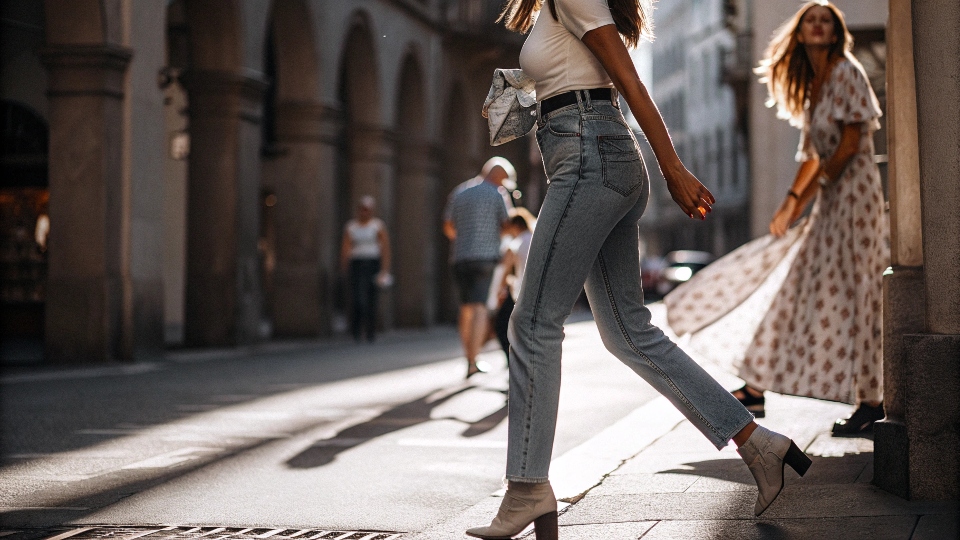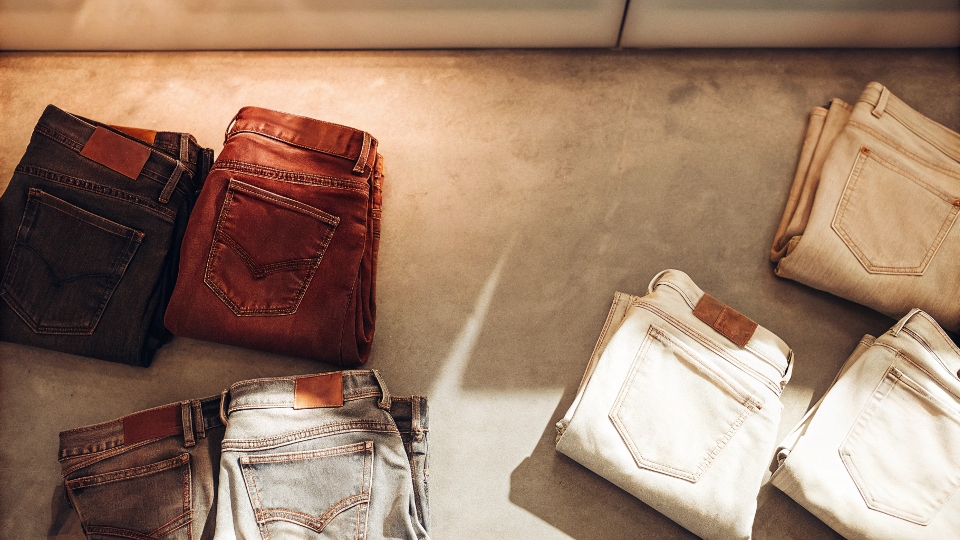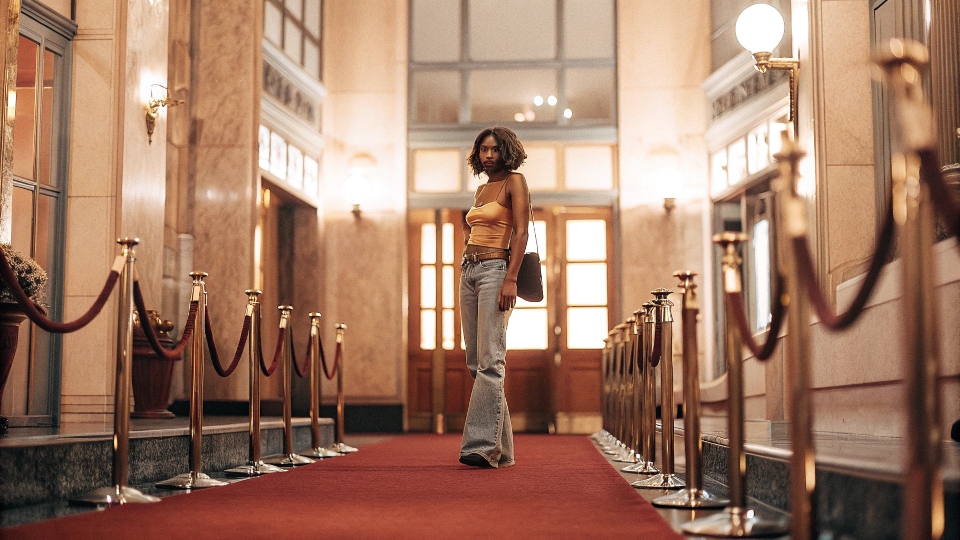You have a special event and choose a beautiful dress, but spend the whole time worrying about it. A gust of wind or a simple misstep could be embarrassing. Practicality often loses to style.
Jeans are more popular than dresses because they offer a superior combination of practicality, versatility1, and durability for daily life. They adapt to any activity or weather without the functional worries dresses often present.
In my two decades running the DiZNEW denim factory, I've learned that clothing succeeds when it solves a problem for the wearer. A dress can be beautiful, but as your insight points out, it can also be a liability.
You have to constantly think about it. Jeans do the opposite. They free you up to focus on your day—your work, your kids, your errands. This fundamental difference in user experience is precisely why jeans have become the default choice for most people, most of the time.
Why does Gen Z wear baggy jeans?
You notice that younger crowds have completely abandoned the skinny jeans2 that dominated fashion for so long. Their loose, baggy silhouettes seem like a strange step backward, making you wonder what's driving the trend.
Gen Z wears baggy jeans for a powerful combination of reasons: superior comfort, a rejection of previous millennial trends, and a deep nostalgia for the androgynous, relaxed styles of the 1990s and Y2K eras.
This massive shift away from slim fits is fascinating to watch from a manufacturing perspective. It's a direct reflection of changing cultural values. After years of being told that fashion required discomfort, a new generation is prioritizing ease of movement.
For them, clothing is about self-expression and comfort, not just showing off a body shape. We see this demand directly in the orders we receive from designers like Dean.
The requests have moved from fabrics with high-stretch recovery to softer, non-stretch denims that drape well and create that perfect loose silhouette. It’s a complete reversal from ten years ago. This trend is a statement against the restrictive styles of the past and an embrace of a more fluid, relaxed approach to personal style.
| Feature | Skinny Jeans (Millennial) | Baggy Jeans (Gen Z) |
|---|---|---|
| Primary Driver | Body-conscious aesthetic | Comfort and self-expression |
| Fit Focus | Tight, form-fitting | Loose, relaxed, androgynous |
| Key Influence | Indie rock, fashion bloggers | 90s hip-hop, skate culture, TikTok |
| Fabric | High-stretch denim (2%+ elastane) | Rigid, 100% cotton or low-stretch |
Why are jeans the most popular pants?
You look in your closet and see five different pairs of jeans, yet you still feel the urge to buy another. What is it about this specific garment that makes it the undisputed king of casualwear worldwide?
Jeans are the most popular pants because they uniquely combine durability, versatility, and the ability to personalize through wear. They are a blank canvas that becomes a personal statement, fitting into almost any social setting or personal style.
This popularity rests on three powerful pillars that I see at play every day in my factory. First is the unmatched durability of denim fabric. It was born as workwear for a reason.
Second is its incredible versatility1. As your insight mentions, you can pair jeans with a t-shirt or a blazer. You can get them in a dozen different colors and endless fits. No other pant can adapt like that. The third, and most magical, pillar is personalization.
A pair of wool trousers looks the same on day one as it does on day one hundred. But a pair of jeans tells a story. The way they fade at the knees or get soft from washing makes them uniquely yours. They age with you. This creates a deep sense of attachment that other pants just can't replicate.
| Pant Type | Durability | Versatility | Personalization |
|---|---|---|---|
| Jeans | Very High | Very High | High (Fades and wears in) |
| Chinos | Medium | High | Low |
| Dress Trousers | Low | Low | None |
Do guys prefer dresses or jeans?
There's an age-old debate about what style men find most attractive on women. Some argue for the classic elegance of a dress, while others champion the casual confidence3 of a great pair of jeans.
Most men's preference isn't about the garment itself but the context and the confidence of the wearer. Jeans communicate a relaxed, approachable confidence suitable for everyday life, while dresses signal elegance for special occasions. True preference is for the woman who feels good in what she's wearing.
This question often misses the most important point, which your insight touches upon perfectly. A person's confidence is the most attractive quality. If a woman is wearing a dress but feels uncomfortable—worried about it riding up or being too formal for the setting—that insecurity shows.
In contrast, when she's in a pair of well-fitting jeans that make her feel powerful and at ease, that confidence radiates. From a production standpoint, our goal at DiZNEW is to create that confidence. We don't make "jeans for impressing men."
We make jeans that fit so well and are so comfortable that the wearer forgets about the garment and can just be their best, most authentic self. The preference isn't for denim or silk; it's for authenticity.
When did dresses over jeans become popular?
You might have a flashback to your early 2000s wardrobe and cringe slightly. The memory of wearing a floral mini-dress over a pair of bootcut jeans was a real, and very popular, fashion moment.
The trend of wearing dresses over jeans was a hallmark of the Y2K fashion4 era, peaking in popularity from roughly 2002 to 2006. It was heavily promoted by Disney Channel celebrities and pop stars as a quirky, layered look.
I remember this era well from the factory floor! We were producing enormous quantities of low-rise, bootcut, and flare jeans. This trend was a perfect example of fashion's experimental nature.
It wasn't about high fashion; it was about youthful fun and breaking rules. The look allowed people to wear their favorite short dresses in a more casual, modest way. The jeans essentially acted as a more stylish pair of leggings. It was all about layering and creating an unexpected silhouette.
While it might look dated now, it was a creative way for people to get more use out of their wardrobe pieces. For a designer like Dean, these trends are fascinating case studies in how street style and pop culture can create demand for very specific garment combinations. It might not be a classic look, but it was certainly an iconic one for its time.
Conclusion
Jeans reign supreme over dresses due to their unmatched practicality and comfort. They are the versatile, worry-free foundation of the modern wardrobe, adapting to your life, not the other way around.
-
Find out how jeans can be styled for various occasions, making them a wardrobe staple. ↩ ↩
-
Discover the reasons behind the fall of skinny jeans and the rise of more comfortable styles. ↩
-
Learn about the psychological impact of clothing choices on self-esteem and confidence. ↩
-
Dive into the quirky and experimental fashion trends that characterized the Y2K era. ↩










